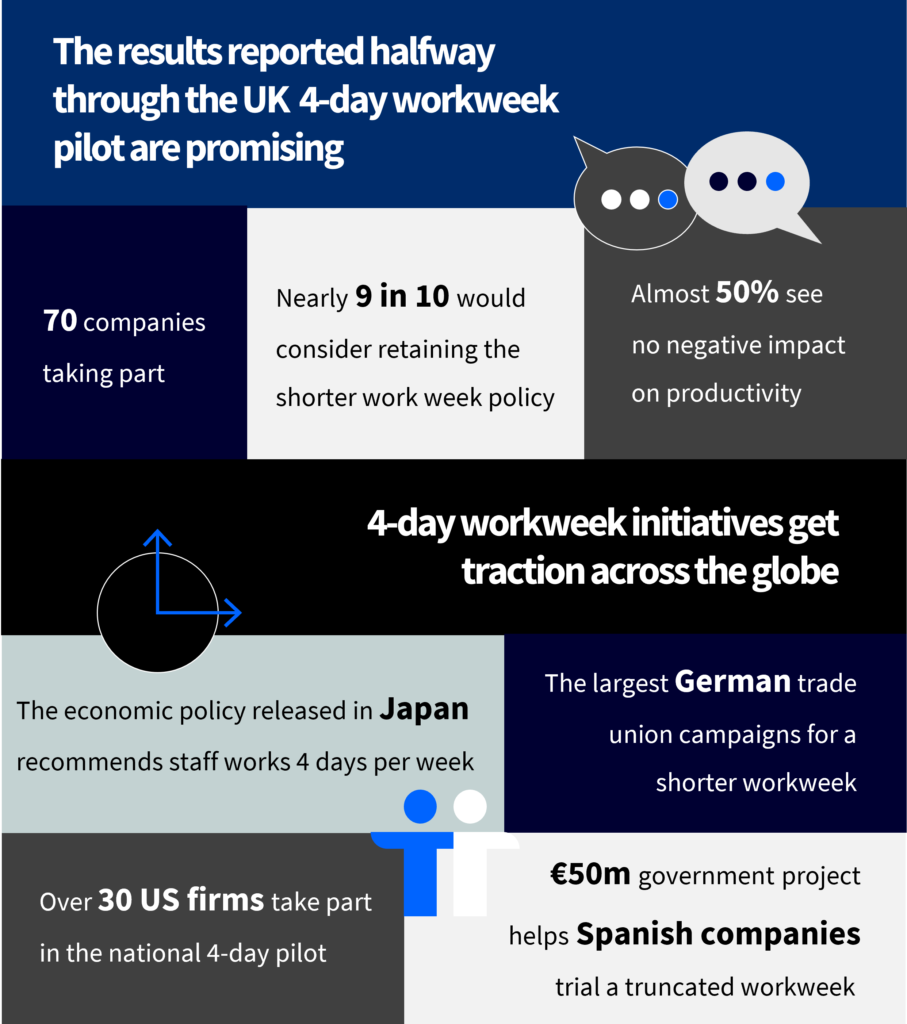Exploring the impacts of four-day workweeks
Insights
.

The success of over 70 UK companies piloting the four-day working week has made the headlines in recent weeks, and interest continues to grow among workers and employers. Many other countries are trying the new approach, as shown above. While we currently focus almost entirely on performance benefits as key for driving the scheme forward, it’s worth considering the effect of similar shifts happening elsewhere – at schools.
Education systems are leading the way
Schools in rural US areas accounted for 70% of 1,600 primary education institutions that adopted a four-day schedule in 2019, with even more turning to this model during the pandemic. UK educational institutions are reportedly considering three or four-day school weeks to manage soaring energy bills, inflation and teacher pay rises. While still not a widespread phenomenon globally, it’s worth keeping an eye on. Provided workers with caregiving responsibilities are the fastest-growing category of employee identity groups; the impact can be severe.
The shortened school week will cause many parents to seek alternative childcare options. If their employer does not offer a four-day working week, many caregivers would have to reduce their full-time employment to accommodate the extra day when their kids are at home. Others will need the support of professional nannies, further straining the already tight family budgets. Worst case scenario for the employers – some workers will look for a job elsewhere, with firms that offer more flexibility.
Forming habits for the future of work
Another consideration is the long-term effect of current students getting used to a shorter academic week. These future generations are future employees, with work styles and workplace expectations being shaped while in school. It’s not often we think about it, as the five-day workweek seems obvious, but when was the first time we started to absorb the current standard work routine? Probably as early as kindergarten or primary school. If turning to four-day school weeks becomes the new standard, students will learn and evolve with this model, expecting to follow the same pattern when leaving school and joining the workforce. While today, we may still have time to debate if implementing a four-day working week is worth it, this may not be a question of “if” for the future workforce.
Read more about the four-day workweek from the Adecco Group.
Related Post
Quiet quitting took social media by storm and sparked a heated debate. Many now see quiet quitting as a way to set healthy professional boundaries. Quiet quitters are finding empowerment ...




